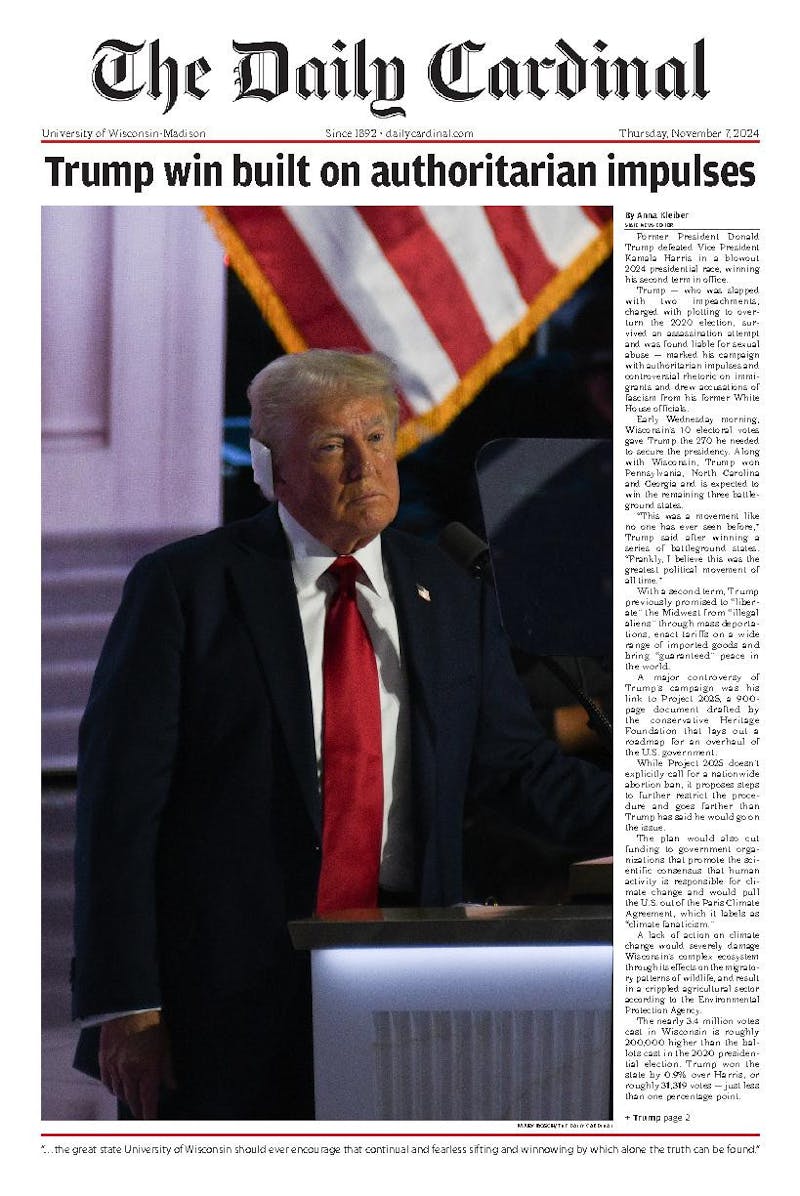Advertising for political candidates nationwide has made far more references to the Sept. 11 attacks this year than it did last election cycle, according to a report released yesterday by the Wisconsin Advertising Project.
From Sept. 7 to Oct. 7, as much as 7 percent of advertisements for federal election campaigns have specifically referred to the Sept. 11 attacks. In the entire 2002 election cycle, only 32 ads made this specific reference.
President Bush's campaign advertisements, and those of groups supporting the re-election of the president, mentioned the attacks in 17 percent of television ads. But John Kerry, said the project's Deputy Director Joel Rivlin, has largely avoided mentioning the attacks. He has instead focused on the broader issue of terrorism, in part due to the reluctance of both campaigns to specifically mention the issue.
\Sept. 11 is the 5,000-pound elephant in the room which is having an effect on this race. But it's very, very difficult to use 9/11 in an ad tastefully,"" said Ken Goldstein, director of the Wisconsin Advertising Project.
Interest groups, however, have used references to the Sept. 11 attacks far more than either the Bush or Kerry campaigns, Goldstein said.
""The Bush and Kerry campaigns are very reluctant, but sometimes groups-fringe groups-are not so reluctant,"" he said. ""The Bush campaign wants to use [Sept. 11] and feels they got a little burned.""
Though numerous national polls show higher support for President Bush on his national security policy, an ad he aired in March drew criticism from some families of those who died in the Sept. 11 attacks. The ad, titled ""Safer, Stronger,"" showed an American flag superimposed on the wreckage of the World Trade Center and firefighters carrying a coffin of one of their fallen peers.
A Bush campaign statement released at the airing of the ad said it intended to show Bush's ""steady leadership and optimistic vision for the country.""
Despite the negative publicity surrounding the ad's imagery, the ad opened wide the floodgates for other campaigns to use pictures of the attacks in their own spots, Rivlin said.
""That Bush did it back in March opened the door to others. The first person to do anything controversial takes most of the flak but it allows other people to follow suit,"" he said. ""The fact that Bush did it ... took some of the pressures from other candidates not to do it.""
Another reversal in campaigning related to Sept. 11 is the number of political ads aired on the anniversary of the attacks. In 2002, the one-year anniversary, only one candidate, Rep. John Wolfe, R-Tenn., intentionally aired a political ad on Sept. 11.
On that day, the nation's top 100 media markets saw 61 airings of political ads. This year's Sept. 11, by contrast, saw 2,206 airings. The Bush campaign aired 1,063 television ads, while the Kerry campaign observed television silence. The Democratic National Committee aired 61 pro-Kerry ads.
""The country's coming to grips with it as being history and remembering the day, but almost moving on. Maybe in 2006, the next election, we won't even be talking about it. It'll be business as usual,"" said Rivlin.
Wis. a battleground state
Wisconsin's media markets have been among the most trodden by campaigns' and interest groups' advertising. The Green Bay-Appleton market, for instance, saw the fifth-highest number of ads in the country in the two weeks between Sept. 24 and Oct. 7. Madison's media market ranked 25th nationally.
""The difference between being in the top 10 and the top 20 is probably not that significant in terms of numbers of ads. Both campaigns are putting heavy, heavy advertising in Wisconsin,"" Goldstein said.
The Wisconsin Advertising Project, a non-partisan research organization, has tracked political advertising frequency and content since 1998. Data come in part from Nielsen Monitor-Plus, which records political ads for analysis.
This two-year election cycle, 5,000 unique spots have been analyzed. These ads have been aired approximately 1.5 million times, and the frequency will probably increase by 20 to 30 percent by Election Day, he said.
""What we do is unique. We're the only people that get information from [multiple sources] and put it together,"" Rivlin said. ""The second thing we do is we're the only people that get everything in the country.""





